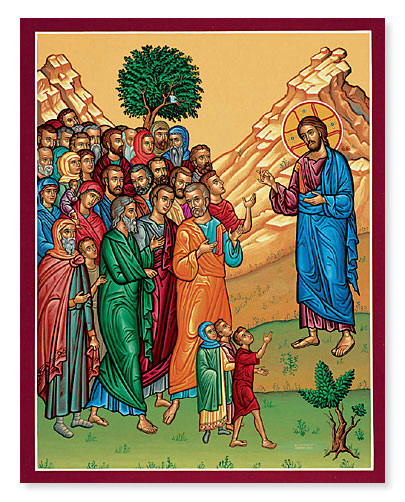
"A Welcoming Community of Faith Rooted in
the Catholic Tradition"
Catechism
of the
Evangelical Catholic Church
The Eucharist
167. What is the Holy Eucharist?
The Holy Eucharist is a sacrament and a sacrifice. In the Holy Eucharist, under the appearances of bread and wine, the Lord Christ is contained, offered, and received.
I am the living bread that has come down from heaven. If anyone eat of this bread he shall live forever. (John 6:51-52)
168. When did Christ institute the Holy Eucharist?Christ instituted the Holy Eucharist at the Last Supper, the night before He died.
And having taken bread, he gave thanks and broke it, and gave it to them, saying, "This is my body, which is being given for you; do this in remembrance of me." In like manner he took also the cup after the supper, saying, "This cup is the new covenant in my blood, which shall be shed for you." (Luke 22:19-20)
169. Who were present when Our Lord instituted the Holy Eucharist?When Our Lord instituted the Holy Eucharist the apostles were present.
Now when the evening arrived, he came with the Twelve. (Mark 14:17)
170. How did Christ institute the Holy Eucharist?
Christ instituted the Holy Eucharist in this way: He took bread, blessed and broke it, and giving it to His apostles, said: "Take and eat; this is My body"; then He took a cup of wine, blessed it, and giving it to them, said: "All of you drink of this; for this is My blood of the new covenant which is being shed for many unto the forgiveness of sins"; finally, He gave His apostles the commission: "Do this in remembrance of Me."
And having taken bread, he gave thanks and broke it, and gave it to them, saying, "This is my body, which is being given for you; do this in remembrance of me." In like manner he took also the cup after the supper, saying, "This cup is the new covenant in my blood, which shall be shed for you." (Luke 22:19-20)171. What happened when Our Lord said: "This is My body . . . this is My blood"?
When Our Lord said, "This is My body," the entire substance of the bread was changed into His body; and when He said, "This is My blood," the entire substance of the wine was changed into His blood.
172. Did anything of the bread and wine remain after their substance had been changed into Our Lord's body and blood?
After the substance of the bread and wine had been changed into Our Lord's body and blood, there remained only the appearances of bread and wine.
173. What do we mean by the appearances of bread and wine?
By the appearances of bread and wine we mean their color, taste, weight, shape, and whatever else appears to the senses.
174. What is the change of the entire substance of the bread and wine into the body and blood of Christ called?
The change of the entire substance of the bread and wine into the body and blood of Christ is called Transubstantiation.
175. Is Jesus Christ whole and entire both under the appearances of bread and under the appearances of wine?
Jesus Christ is whole and entire both under the appearances of bread and under the appearances of wine.
176. How was Our Lord able to change bread and wine into His body and blood?
Our Lord was able to change bread and wine into His body and blood by His almighty power.
All power in heaven and on earth has been given to me. (Matthew 28:18)
177. Does this change of bread and wine into the body and blood of Christ continue to be made in the Church?
The change of bread and wine into the body and blood of Christ continues to be made in the Church by Jesus Christ, through the ministry of His priests.
178. When did Christ give His priests the power to change bread and wine into His body and blood?
Christ gave His priests the power to change bread and wine into His body and blood when He made the apostles priests at the Last Supper by saying to them: "Do this in remembrance of Me."
179. How do priests exercise their power to change bread and wine into the body and blood of Christ?
Priests exercise their power to change bread and wine into the body and blood of Christ by repeating at the Consecration of the Mass the words of Christ: "This is My Body ... this is My blood."
180. Why does Christ give us His own body and blood in the Holy Eucharist?
Christ gives us His own body and blood in the Holy Eucharist:
1. to be offered as a sacrifice commemorating and renewing for all time the sacrifice of the cross;
2. to be received by the faithful in Holy Communion;
3. to remain ever on our altars as the proof of His love for us, and to be worshiped by us.

